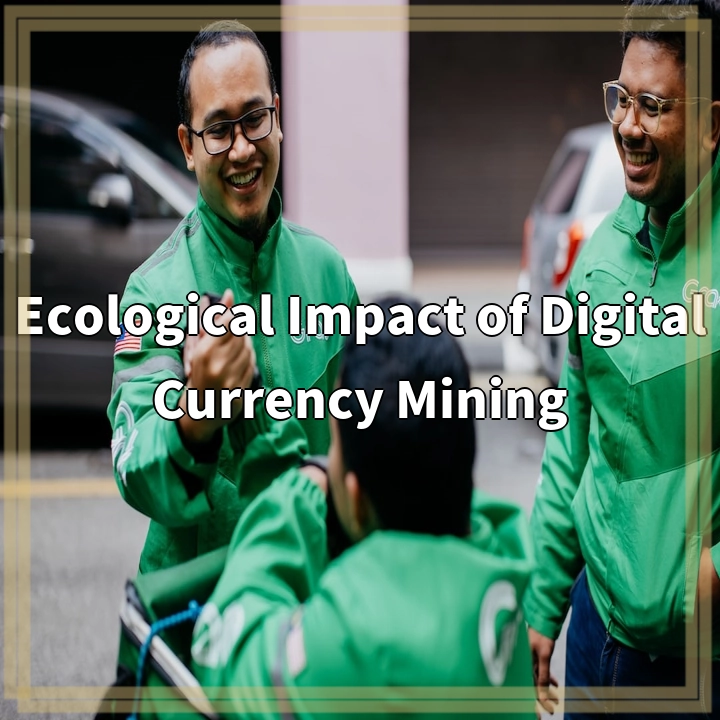
What is Digital Currency Mining?
Digital currency mining refers to the process of using specialized computer hardware to solve complex mathematical problems in order to validate and record transactions on a blockchain network. This process requires significant computational power and energy consumption.
Real-World Problems Associated with Digital Currency Mining
1. Energy Consumption
One of the major concerns surrounding digital currency mining is its substantial energy consumption. The mining process requires powerful computers that run continuously, consuming large amounts of electricity. This energy demand has led to increased carbon emissions and puts additional strain on already overburdened energy grids.
2. Environmental Impact
The high energy consumption of digital currency mining has a significant environmental impact. Most of the electricity used for mining comes from fossil fuel sources, leading to increased greenhouse gas emissions. The extraction and production of the necessary hardware also contribute to pollution and resource depletion.
3. E-Waste Generation
Digital currency mining relies on specialized hardware known as ASICs (Application-Specific Integrated Circuits) or GPUs (Graphics Processing Units). As technology advances, older mining equipment quickly becomes obsolete, generating electronic waste. The improper disposal of these components can have serious environmental and health consequences.
4. Overconsumption of Resources
The mining process requires a significant amount of resources, including electricity, computing power, and cooling systems. This demand puts pressure on the availability of these resources, leading to increased competition, higher costs, and potential shortages in certain regions.
5. Centralization of Mining Power
Digital currency mining has become increasingly centralized, with a small number of large mining operations dominating the industry. This concentration of power raises concerns about network security, as a large percentage of mining power lies in the hands of a few entities, making the network more susceptible to attacks or manipulation.
6. Water Usage
Certain mining operations, particularly those located in regions with access to cheap electricity, rely on water for cooling their equipment. This can strain local water resources, especially in areas already facing water scarcity issues.
7. Conflict with Other Land Uses
Digital currency mining operations often require significant physical space, which can conflict with other land uses, such as agriculture, wildlife conservation, or residential areas. This can lead to the displacement of communities, destruction of habitats, and negative impacts on local ecosystems.
By addressing these real-world problems associated with digital currency mining, it becomes possible to minimize the ecological impact and foster more sustainable practices within the industry.

Solutions to the Ecological Impact of Digital Currency Mining
There are several solutions that can address the environmental concerns associated with digital currency mining and promote more sustainable practices. These include:
1. Transition to Renewable Energy
Shifting mining operations toward renewable energy sources can significantly reduce carbon emissions and dependency on fossil fuels. Utilizing solar, wind, or hydroelectric power can help mitigate the environmental impact of mining.
2. Improved Energy Efficiency
Developing and implementing more energy-efficient mining hardware and optimizing mining algorithms can reduce the energy consumption of the process without compromising its effectiveness. This includes upgrading to more efficient cooling systems and adopting energy-saving measures.
3. Circular Economy Approach
Adopting a circular economy approach to digital currency mining can help address e-waste concerns. This involves the reuse, refurbishment, or recycling of old mining equipment and components, reducing the need for new resource extraction and minimizing waste generation.
4. Regulatory Measures
Implementing regulations and guidelines for digital currency mining can help ensure responsible practices and hold mining operators accountable for their environmental impact. These regulations may include mandatory environmental assessments, emission limits, and responsible e-waste disposal.
5. Decentralization and Community Engagement
Promoting decentralized mining networks can distribute mining power and prevent the concentration of control in a few entities. Engaging with local communities and stakeholders can help identify potential conflicts with other land uses and develop sustainable mining practices that respect environmental and social concerns.
6. Research and Innovation
Continued research and innovation in digital currency mining technologies and practices are crucial for finding more sustainable solutions. Collaboration between industry experts, researchers, and environmental organizations can drive the development of cleaner and more efficient mining methods.
By implementing these solutions, it is possible to reduce the ecological impact of digital currency mining and pave the way for a more sustainable and environmentally conscious industry.















